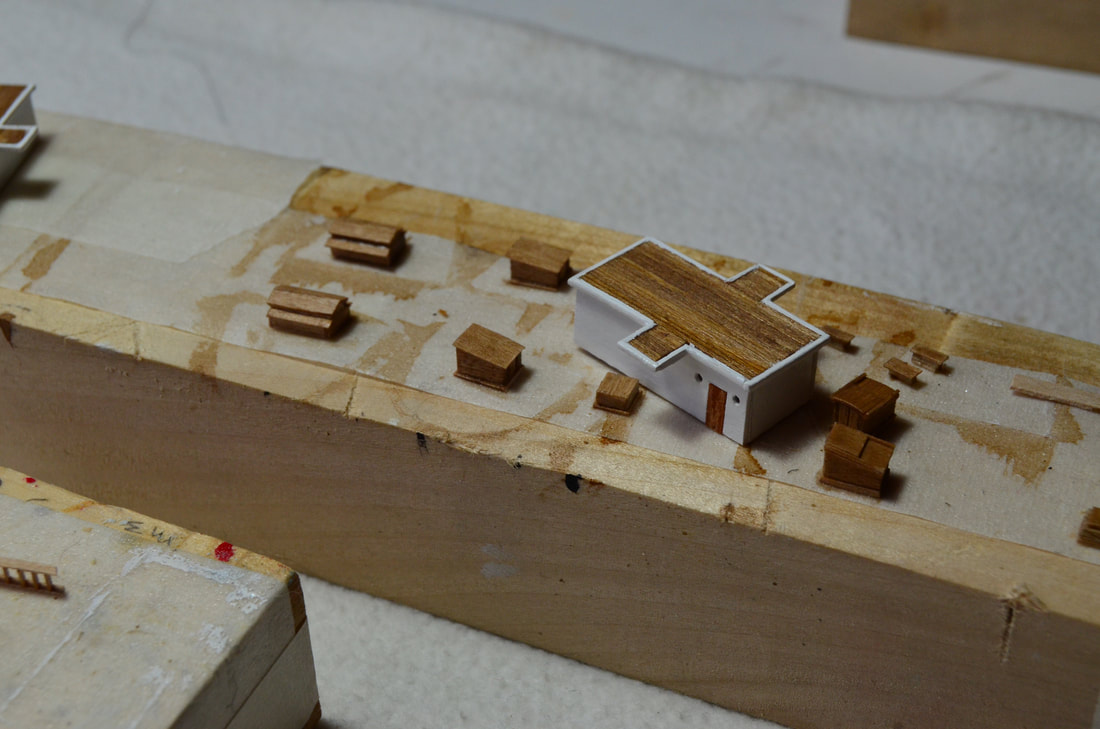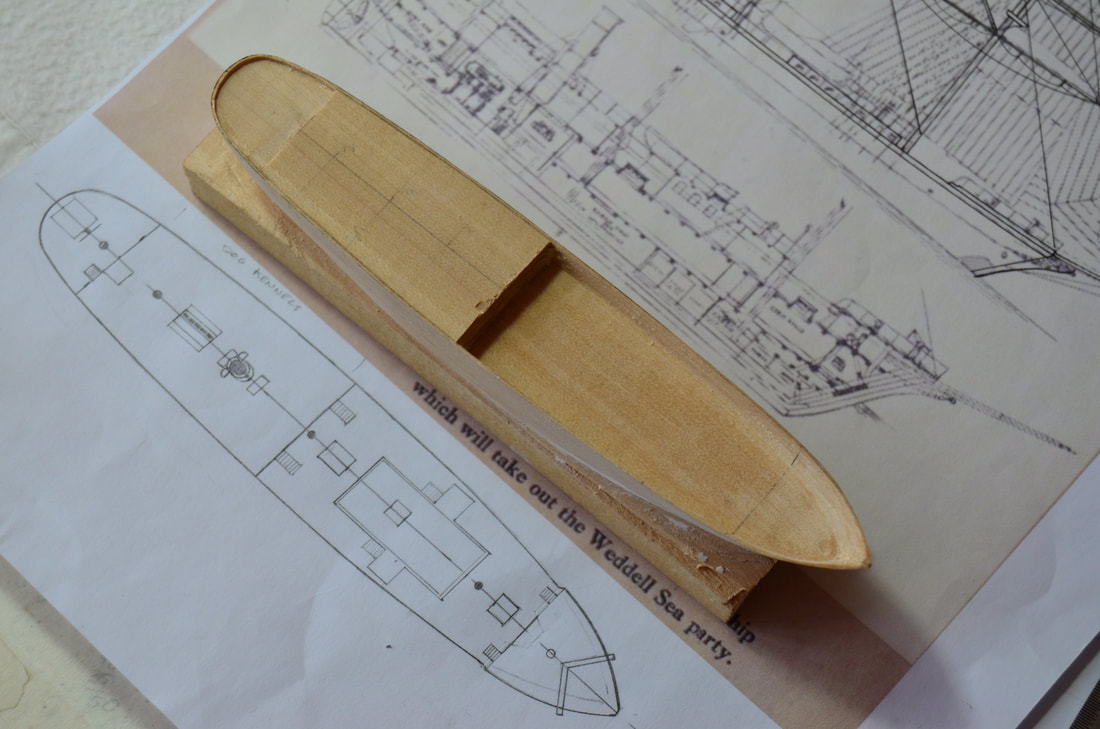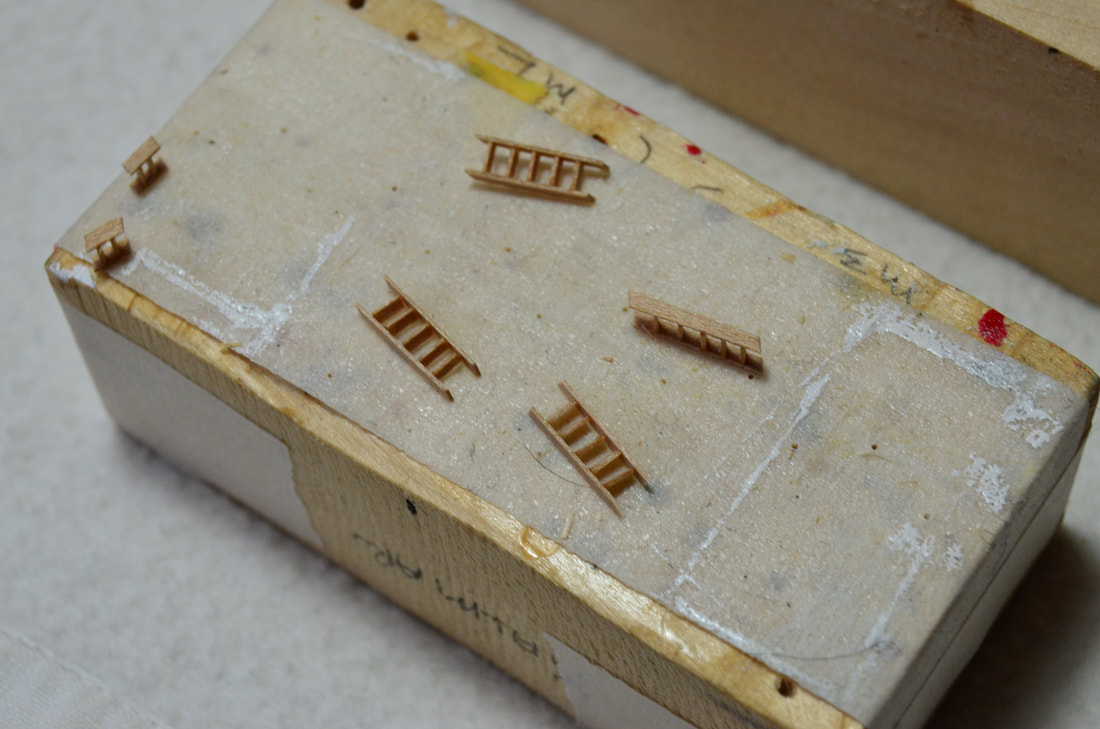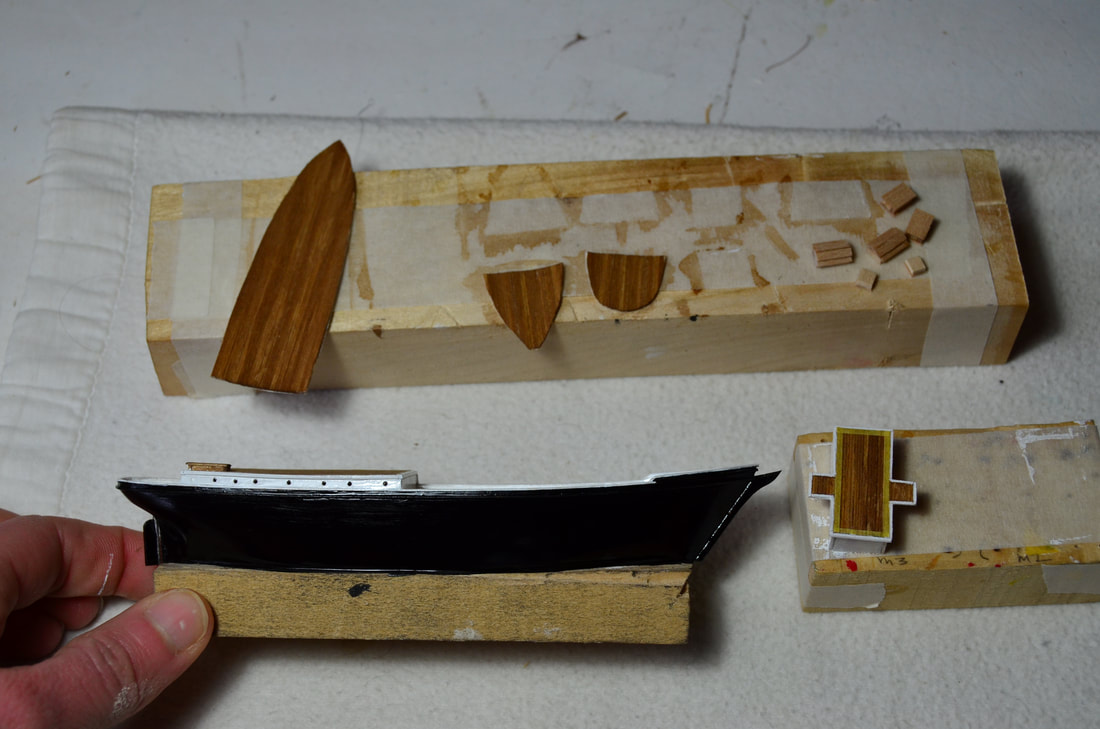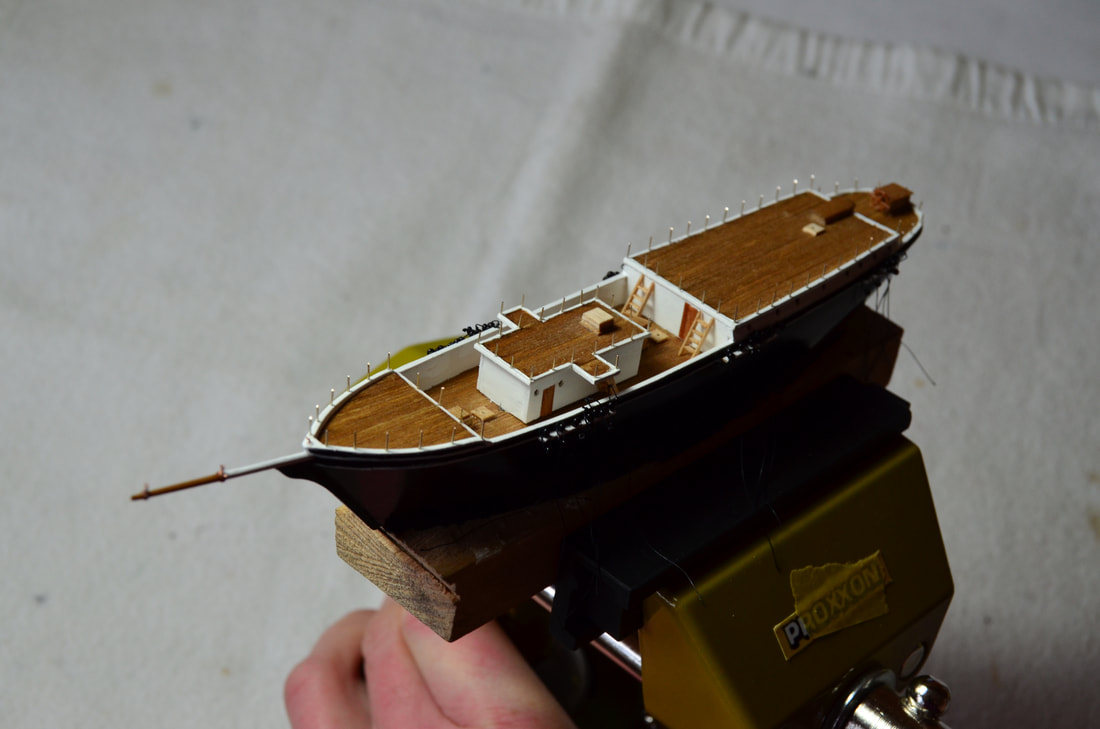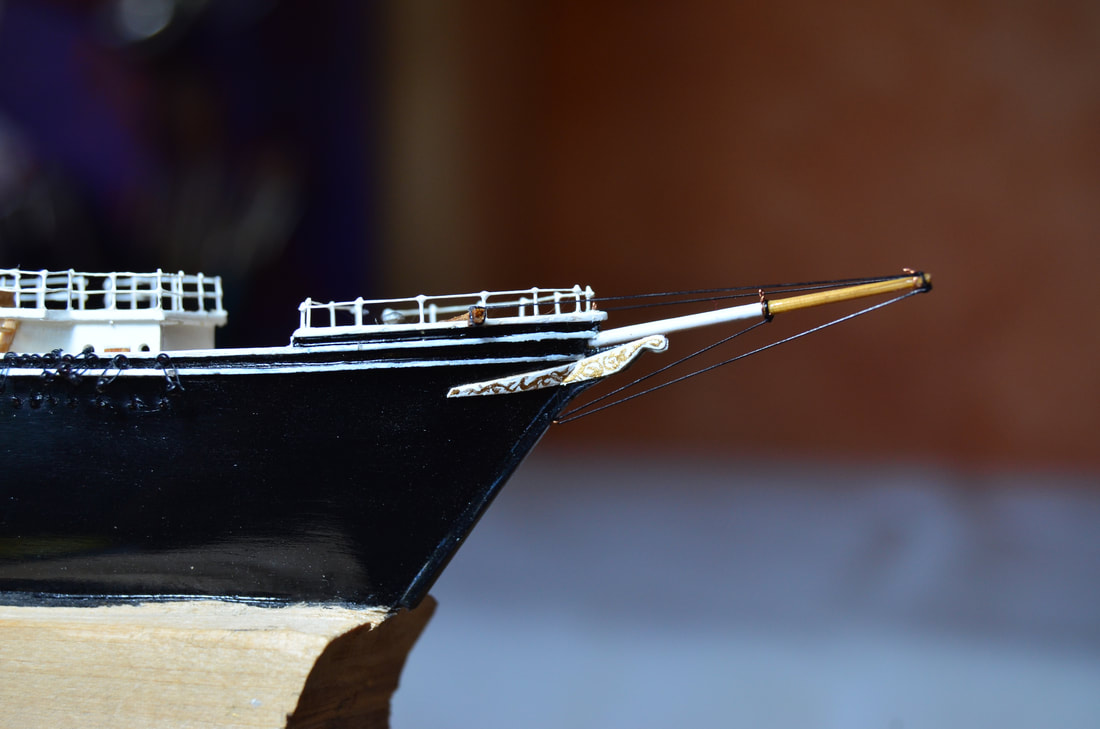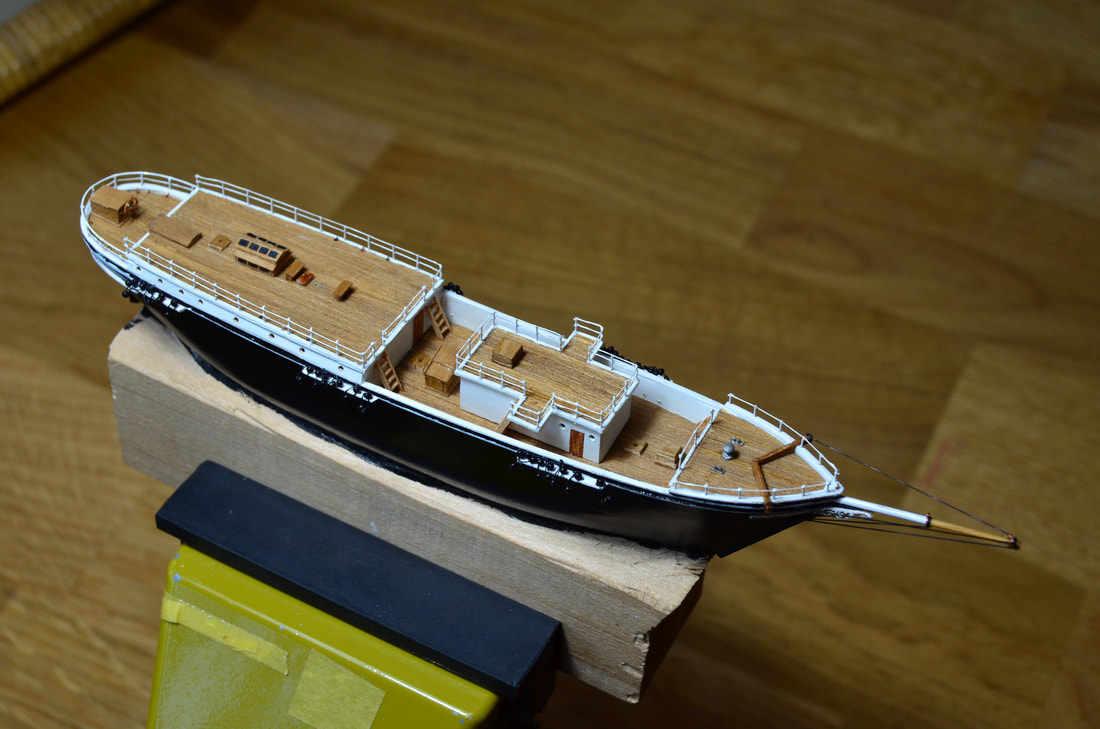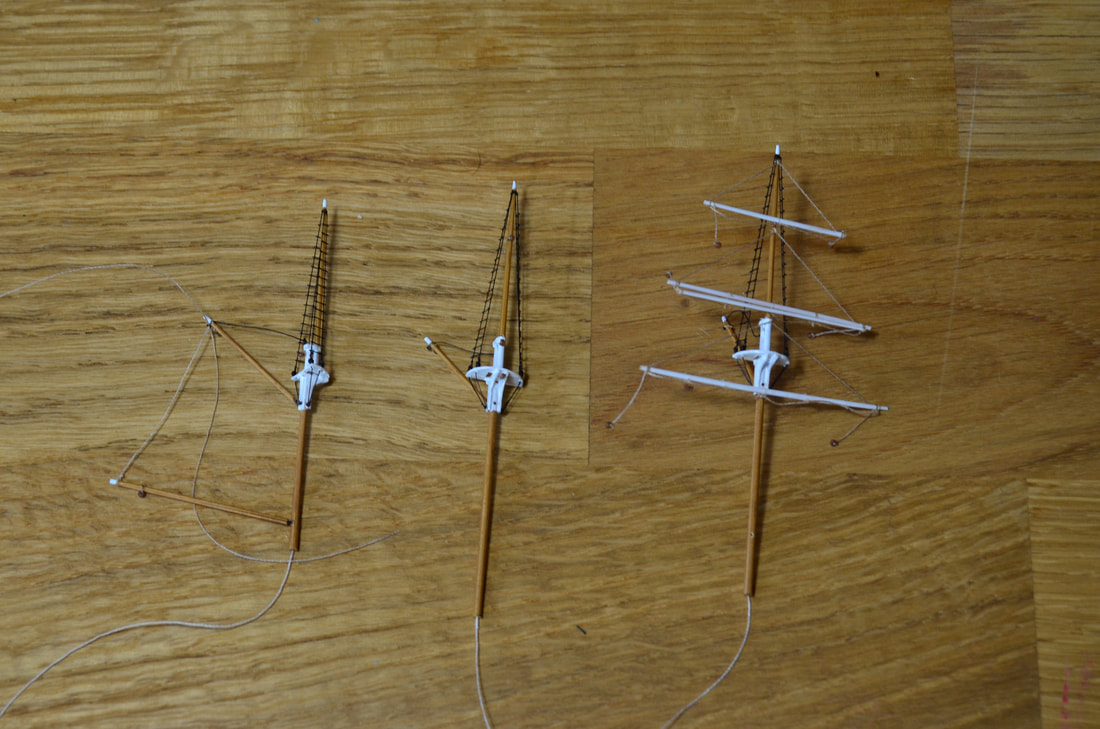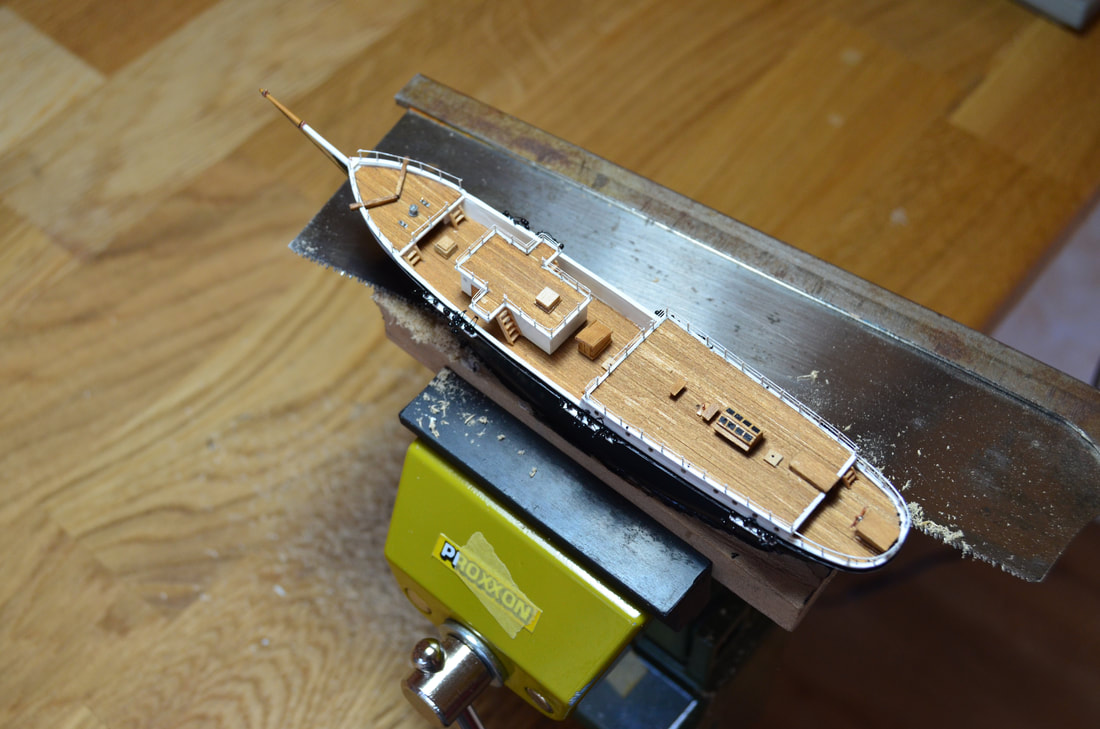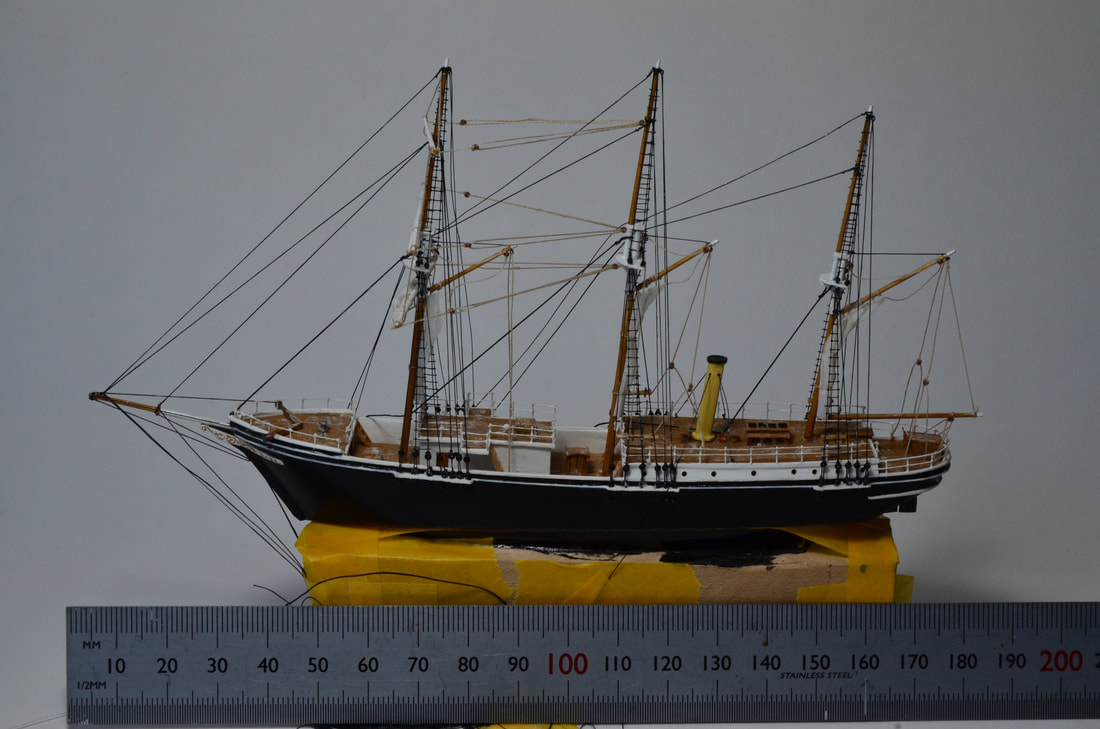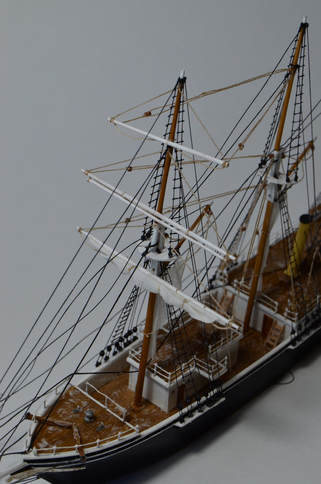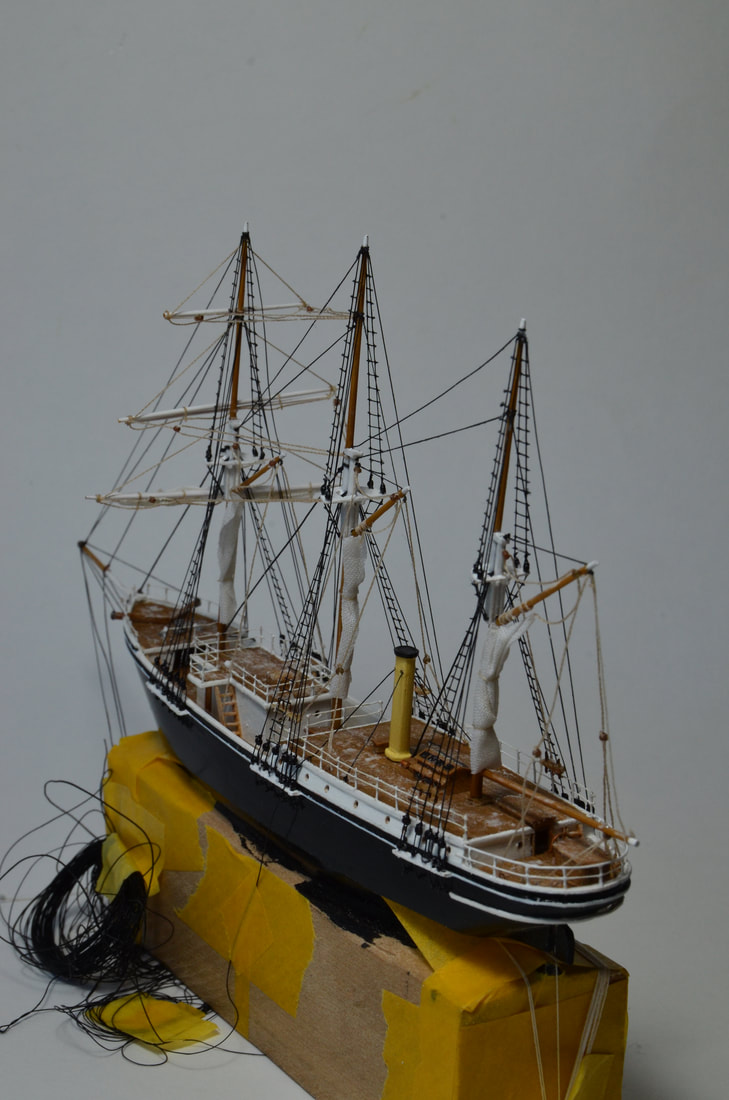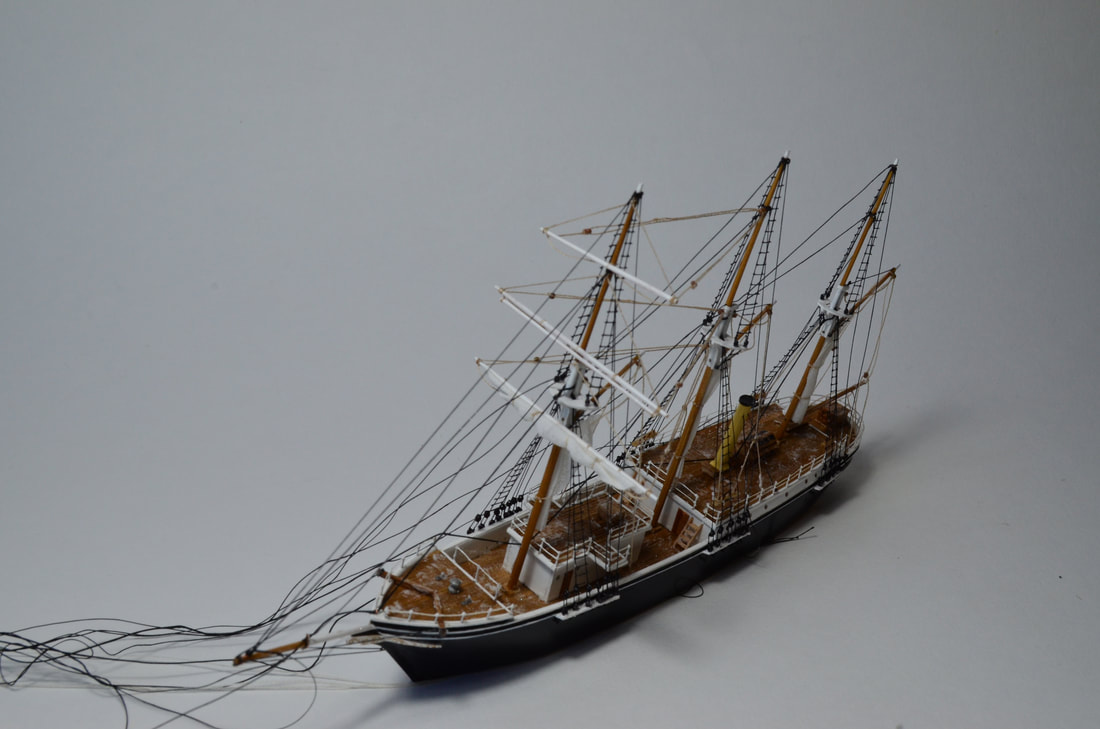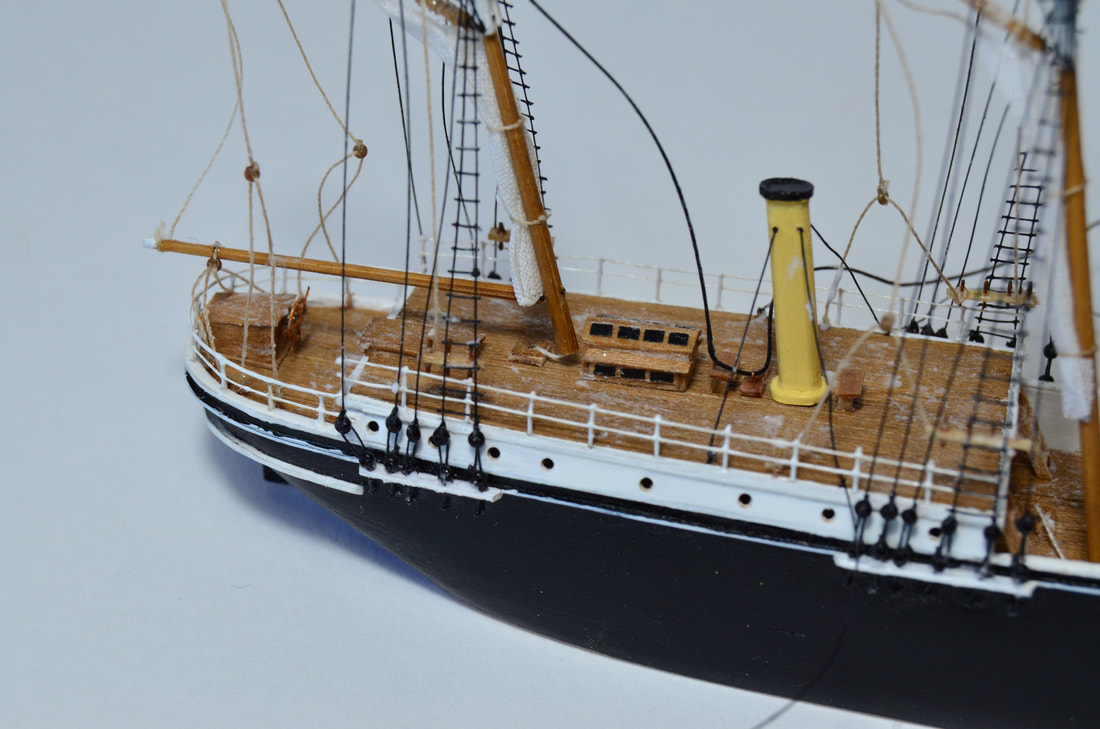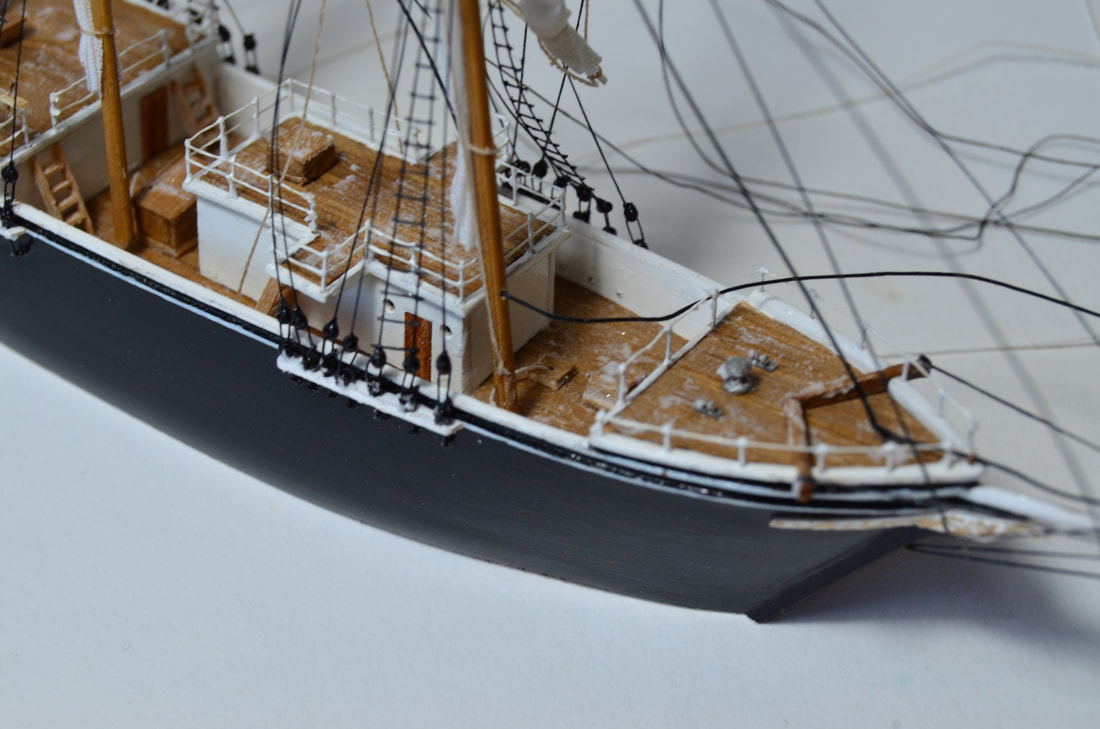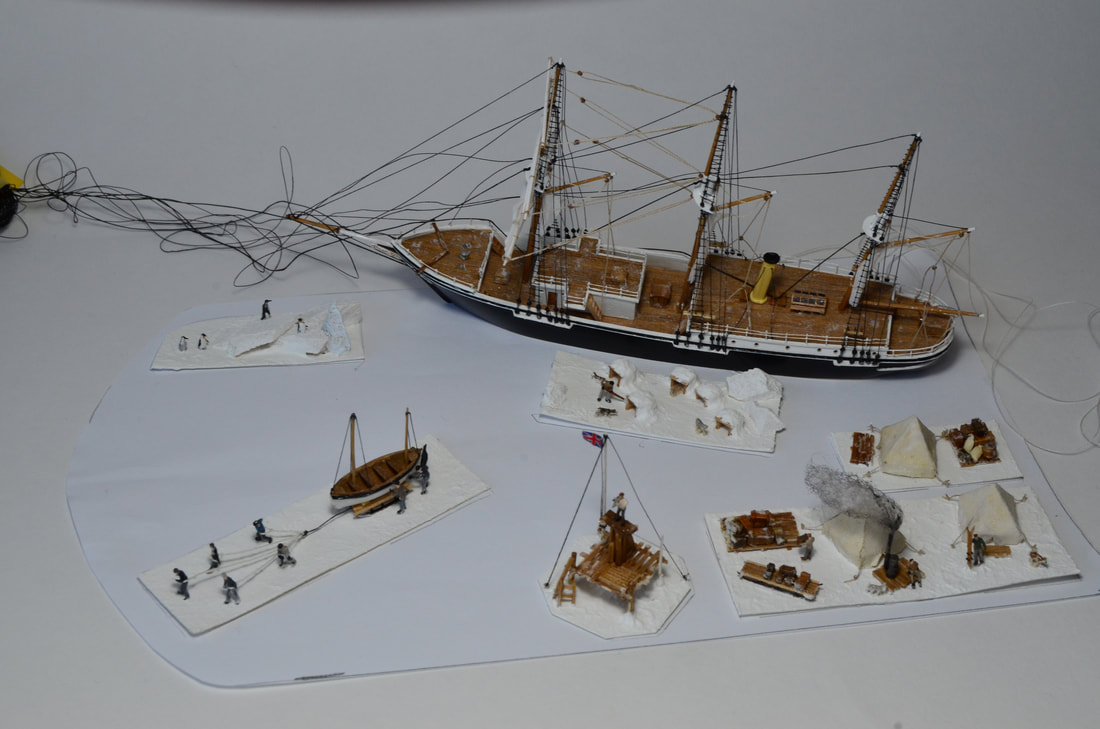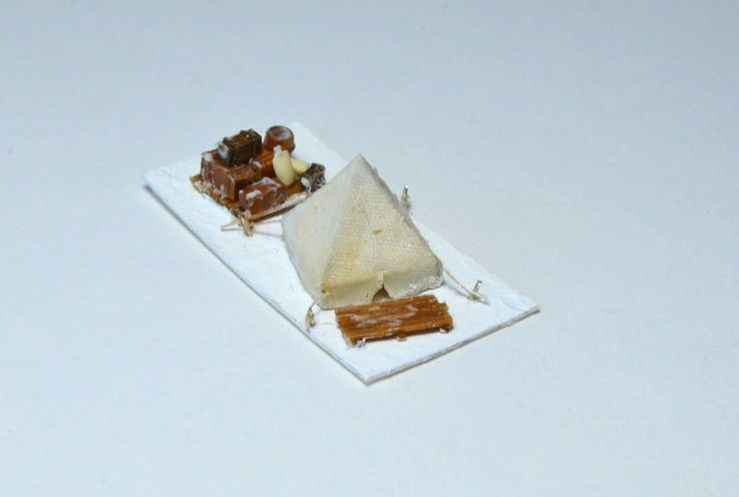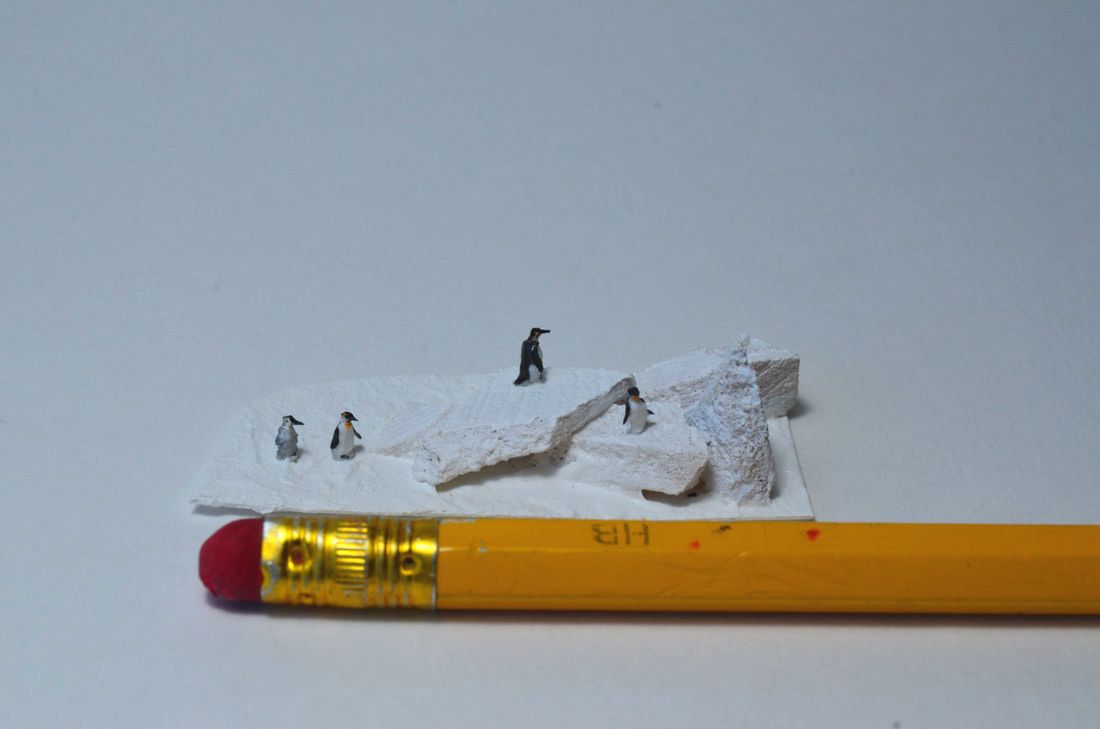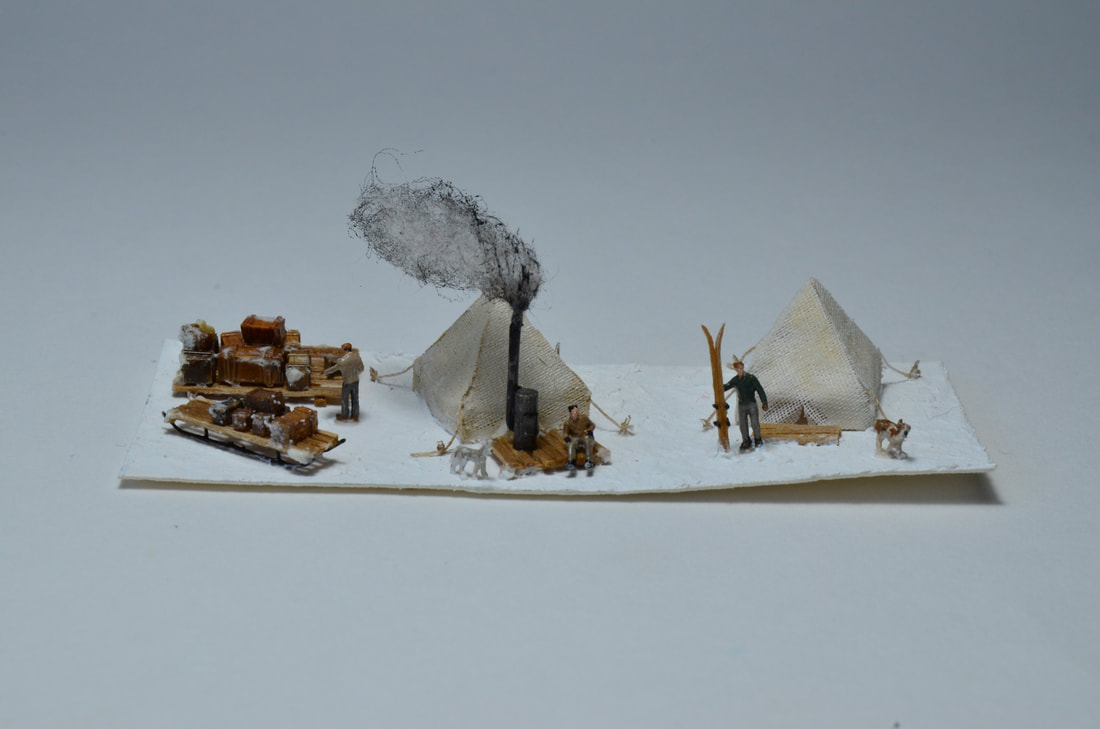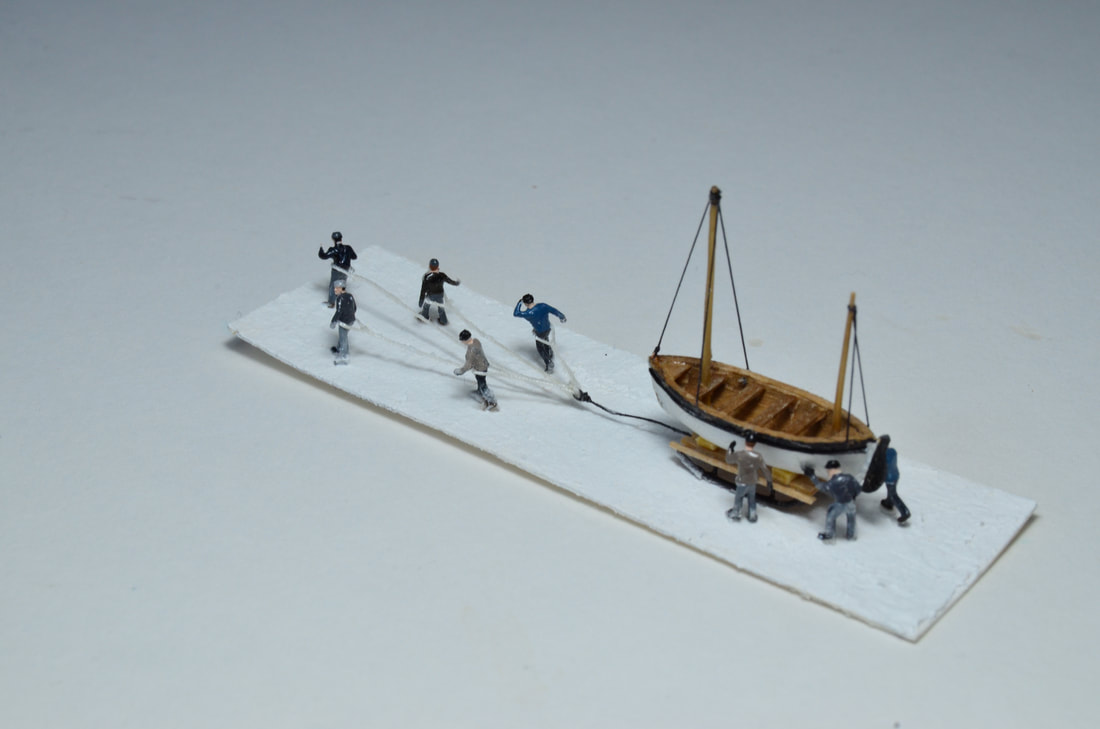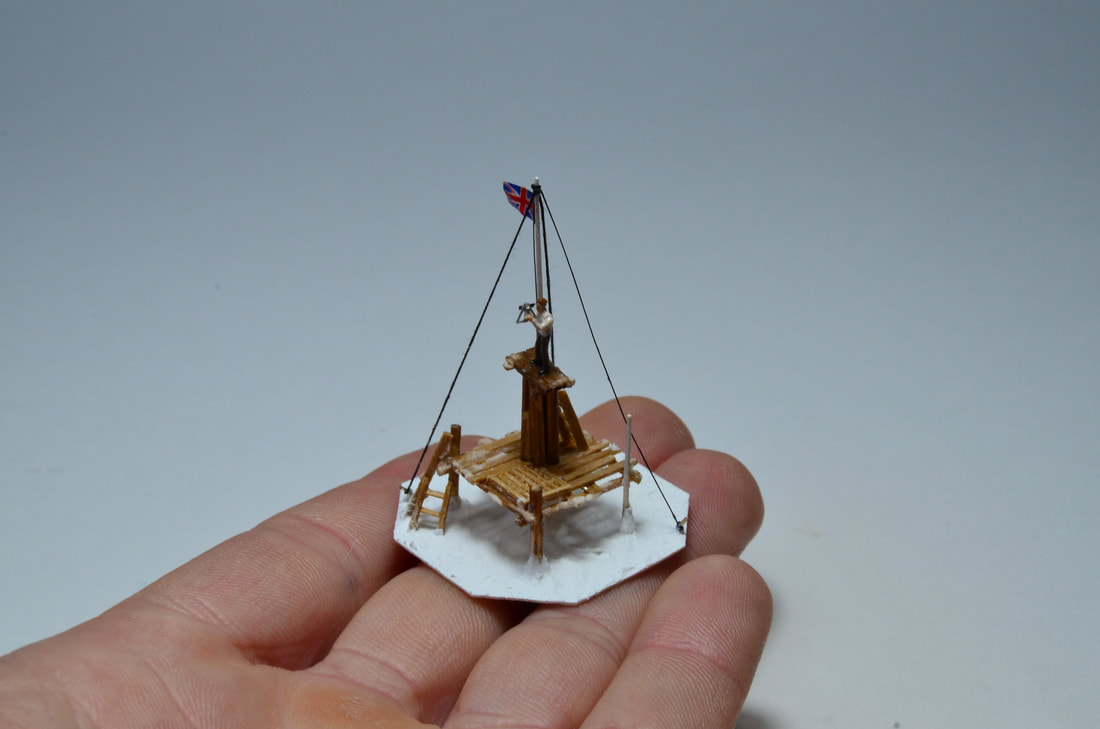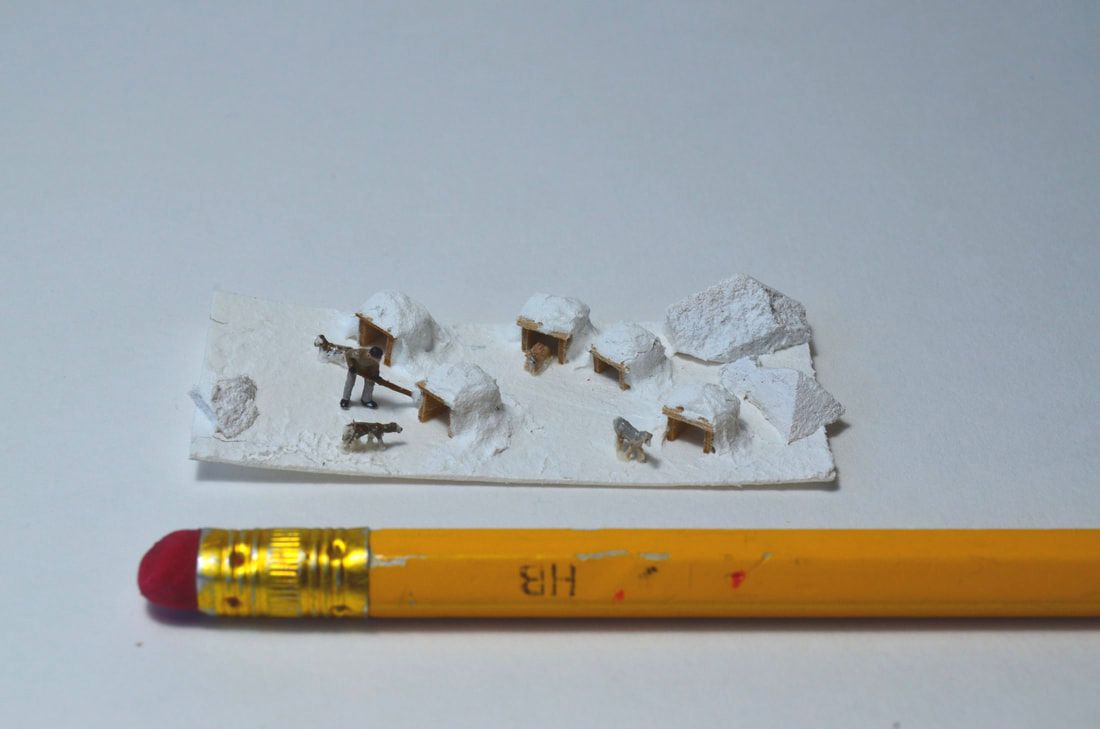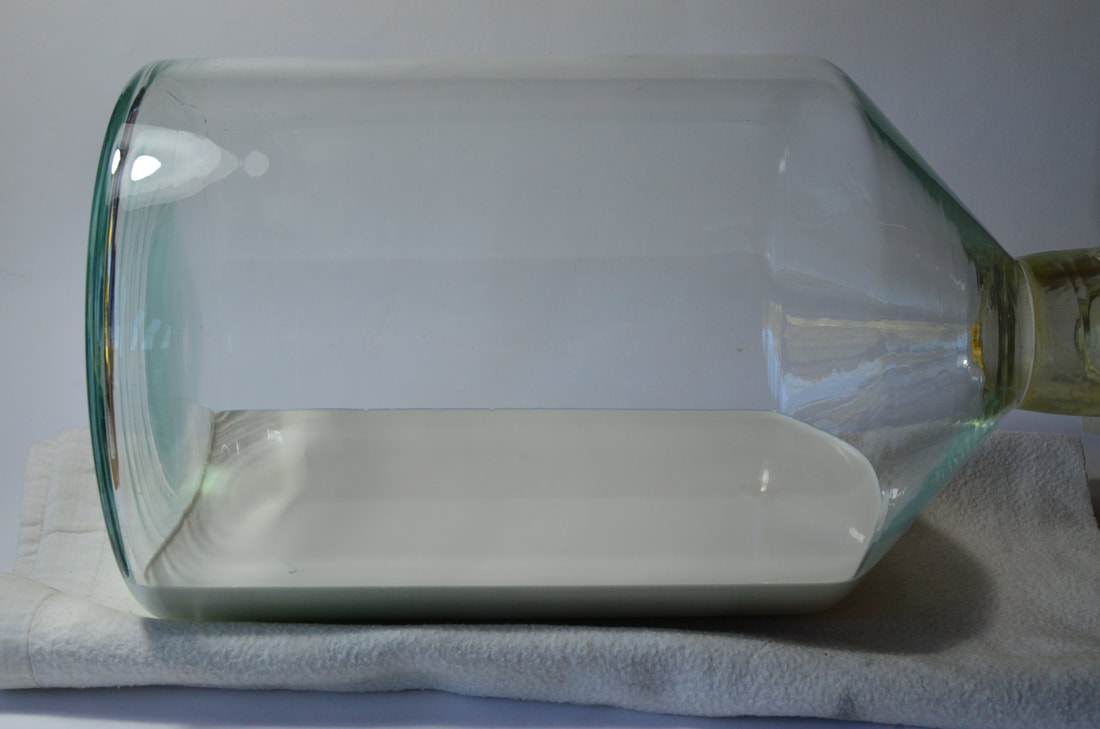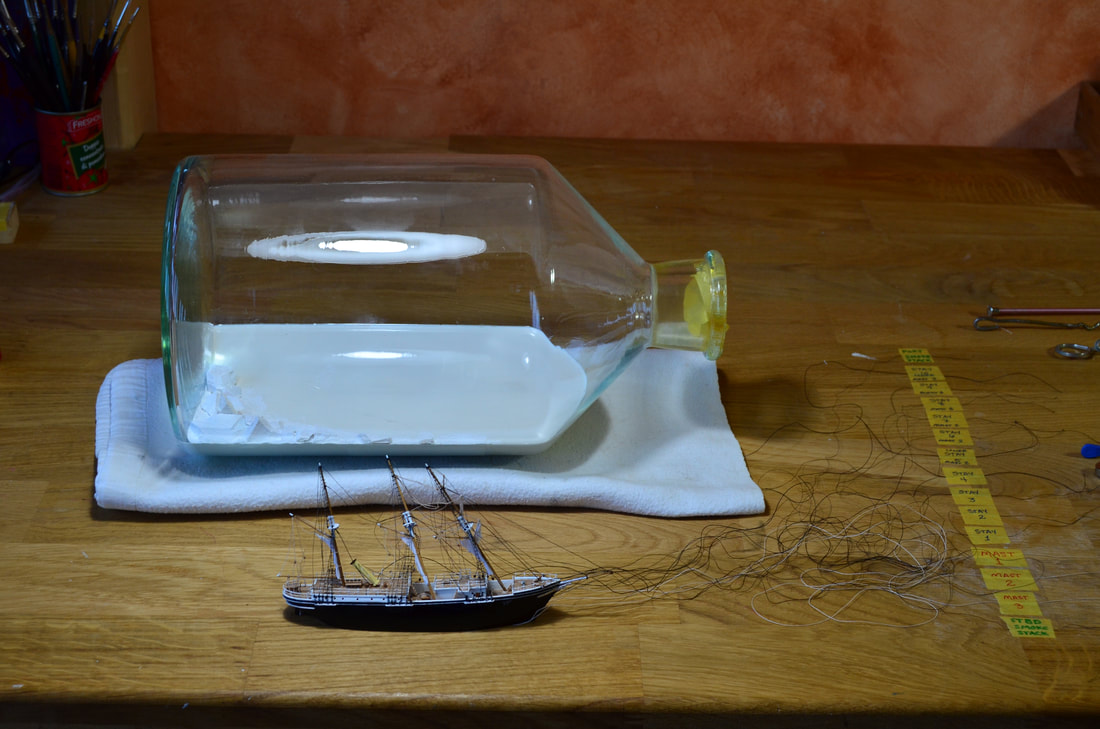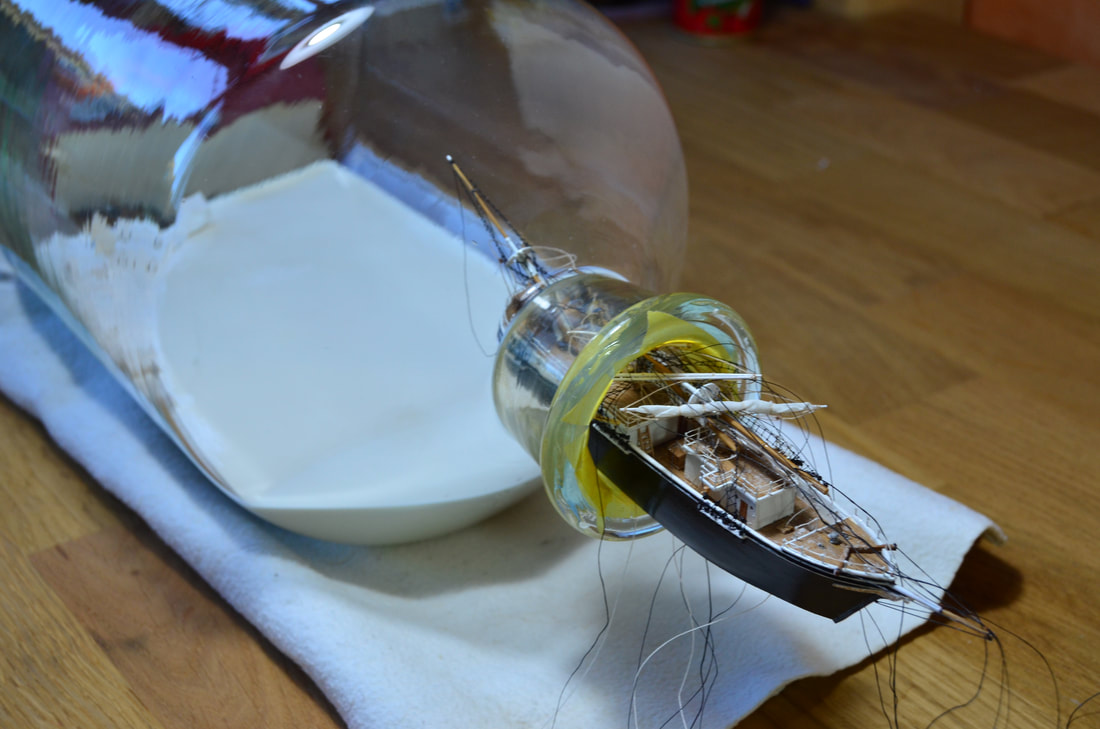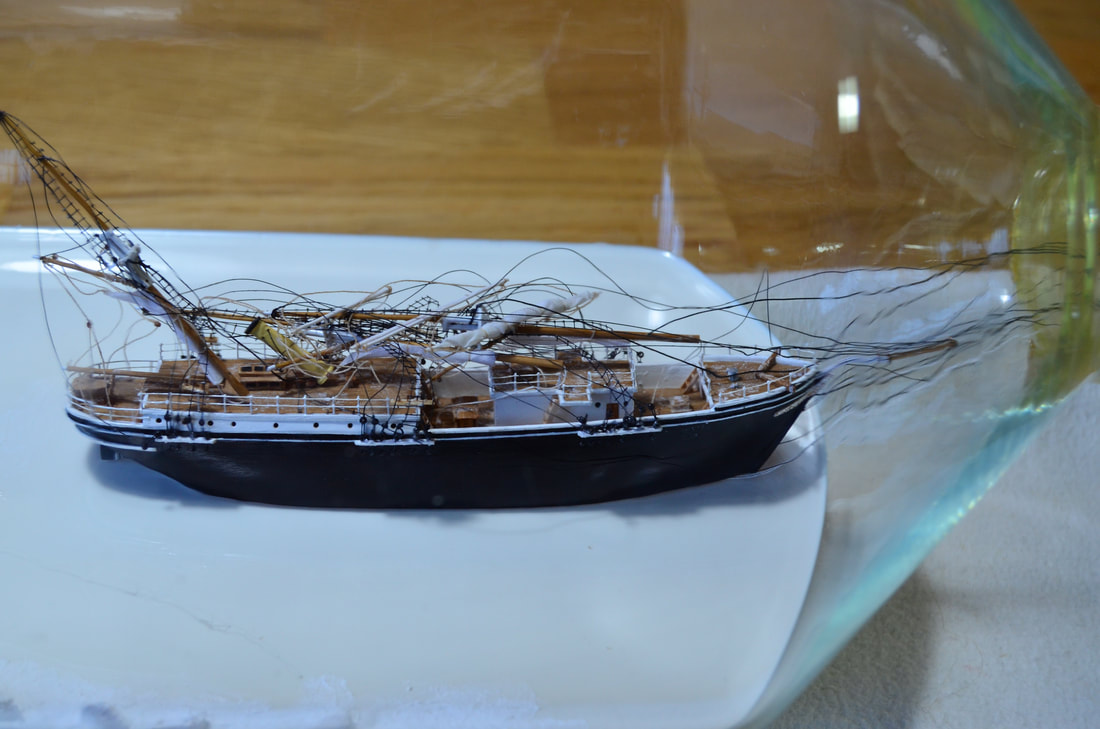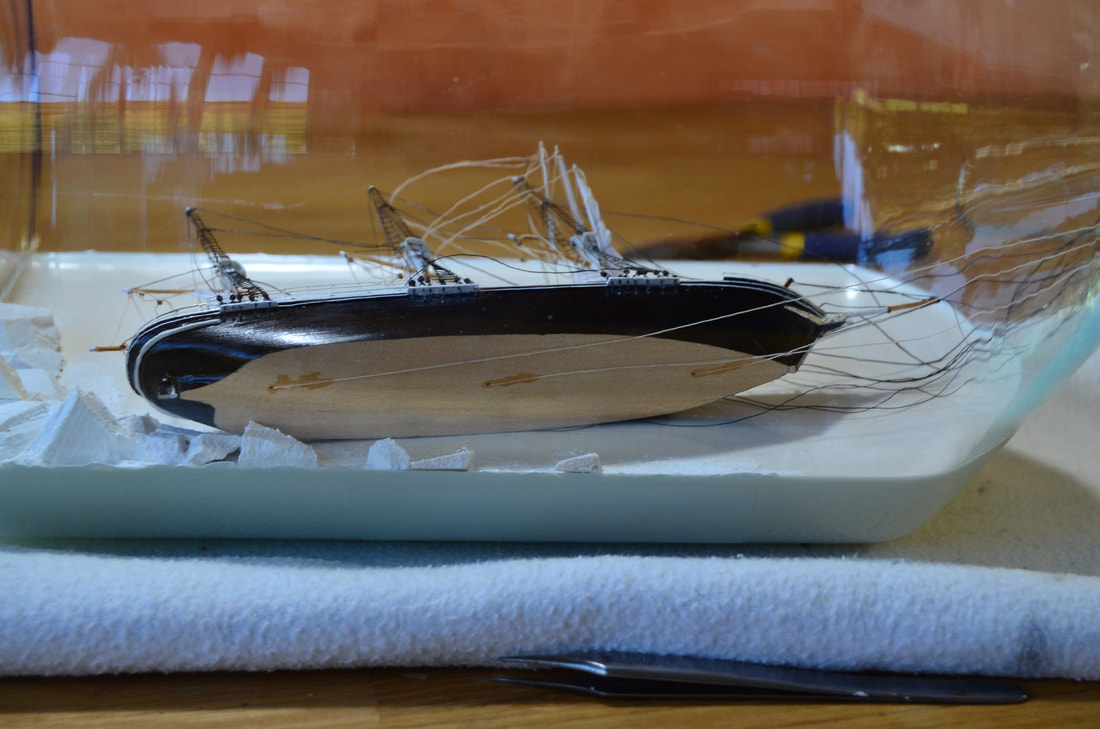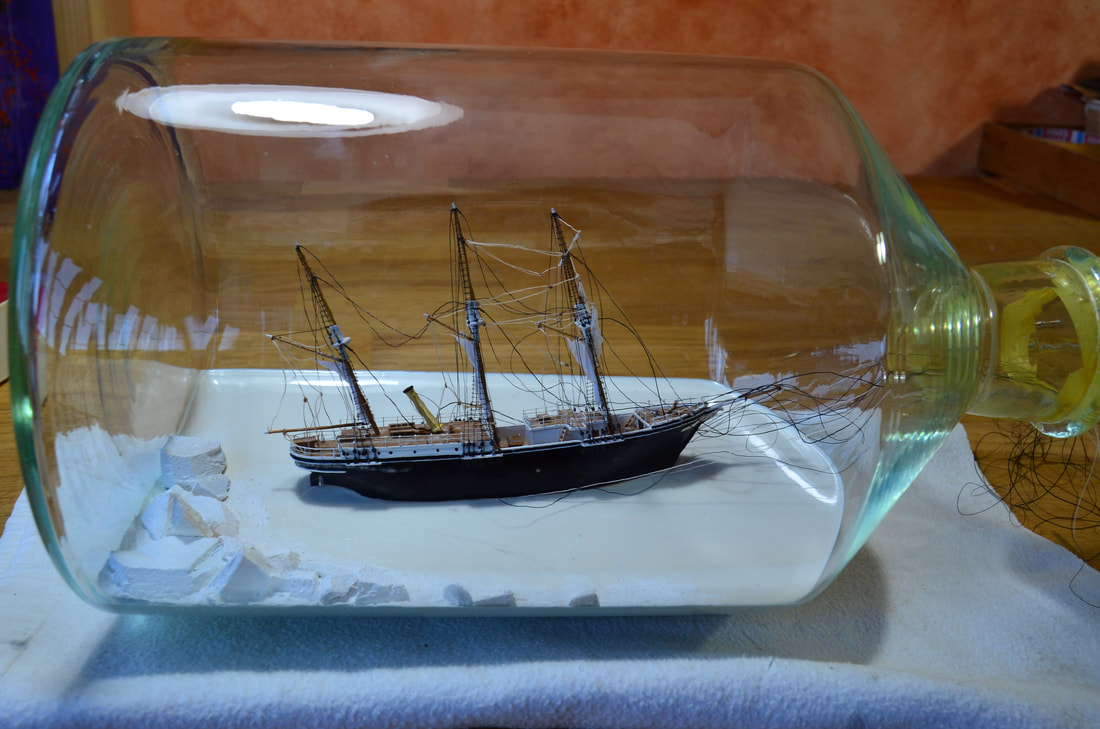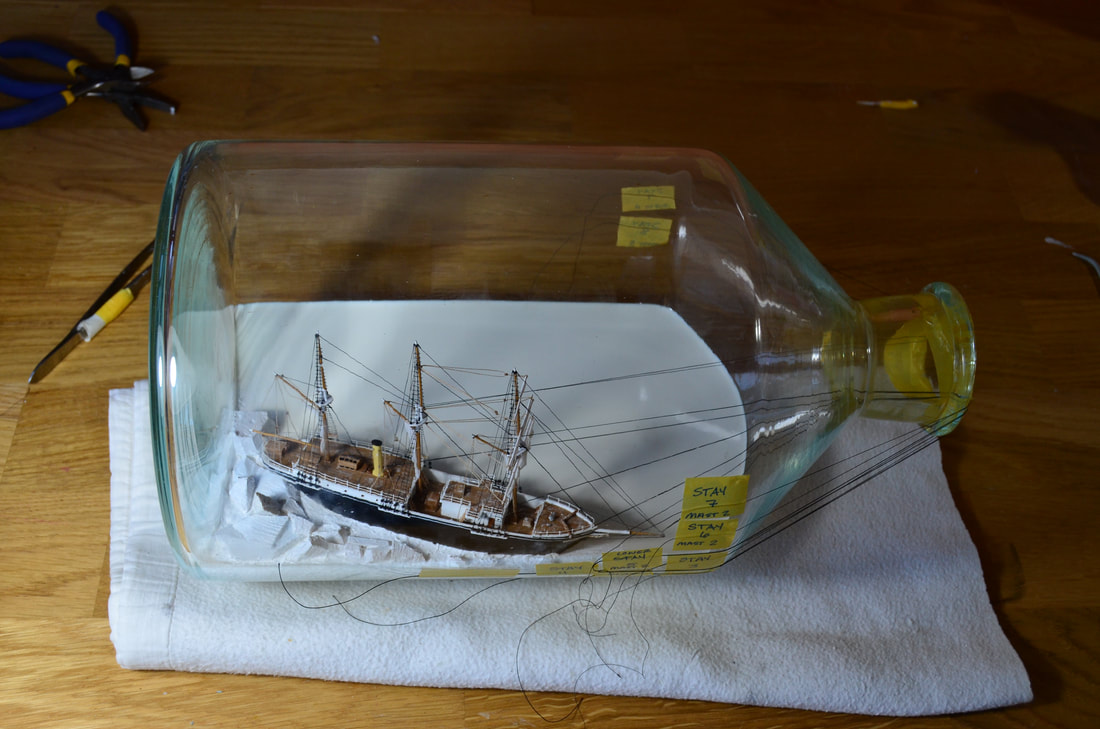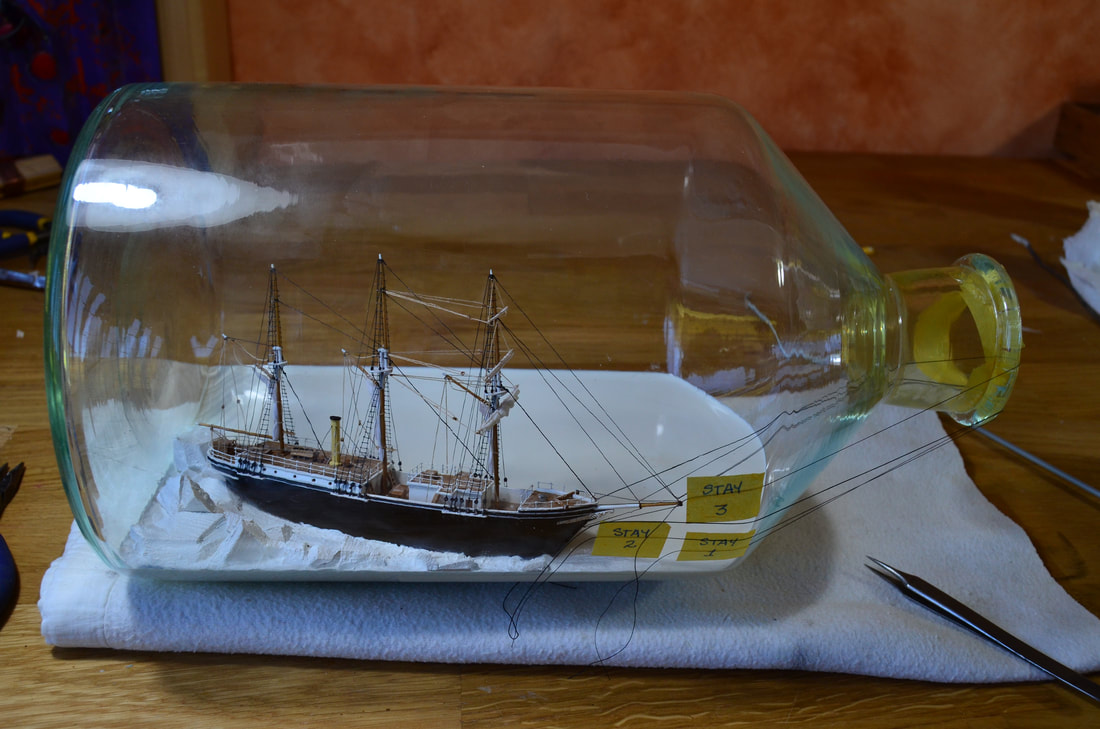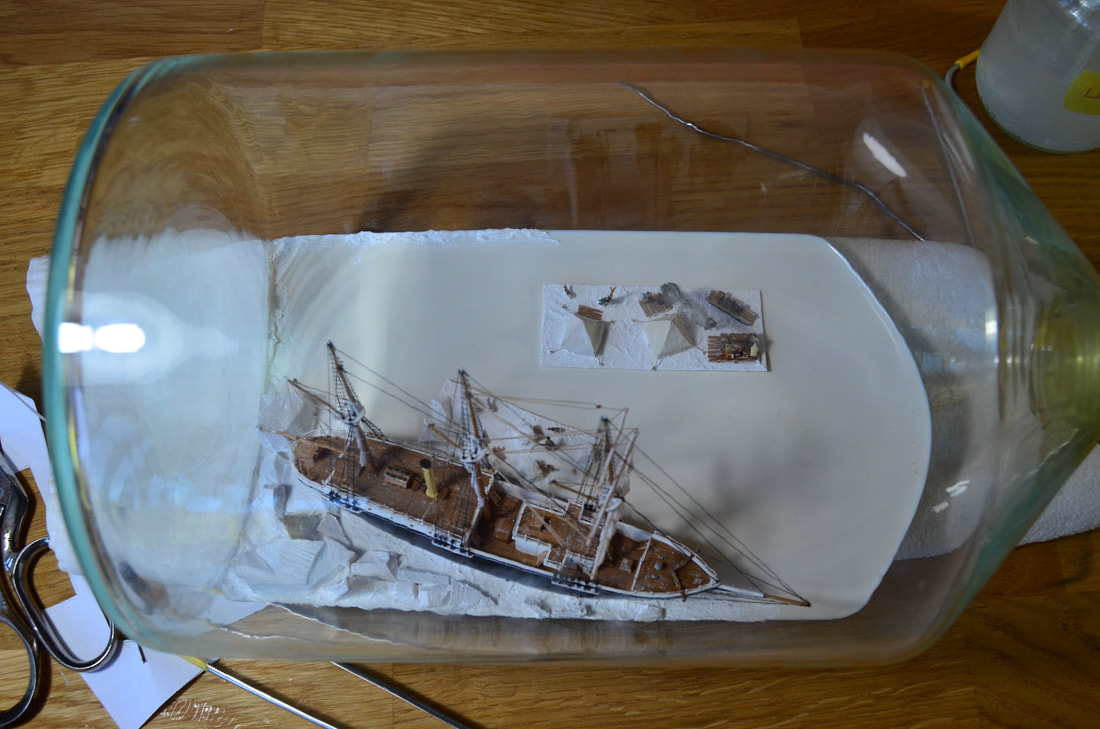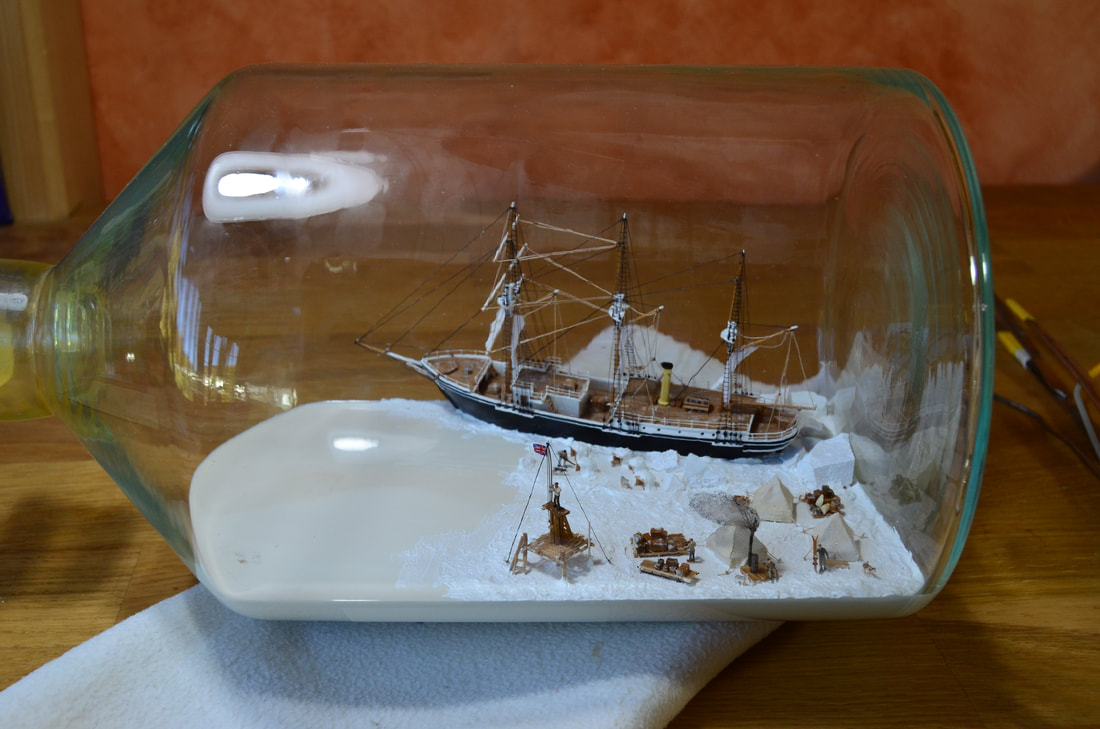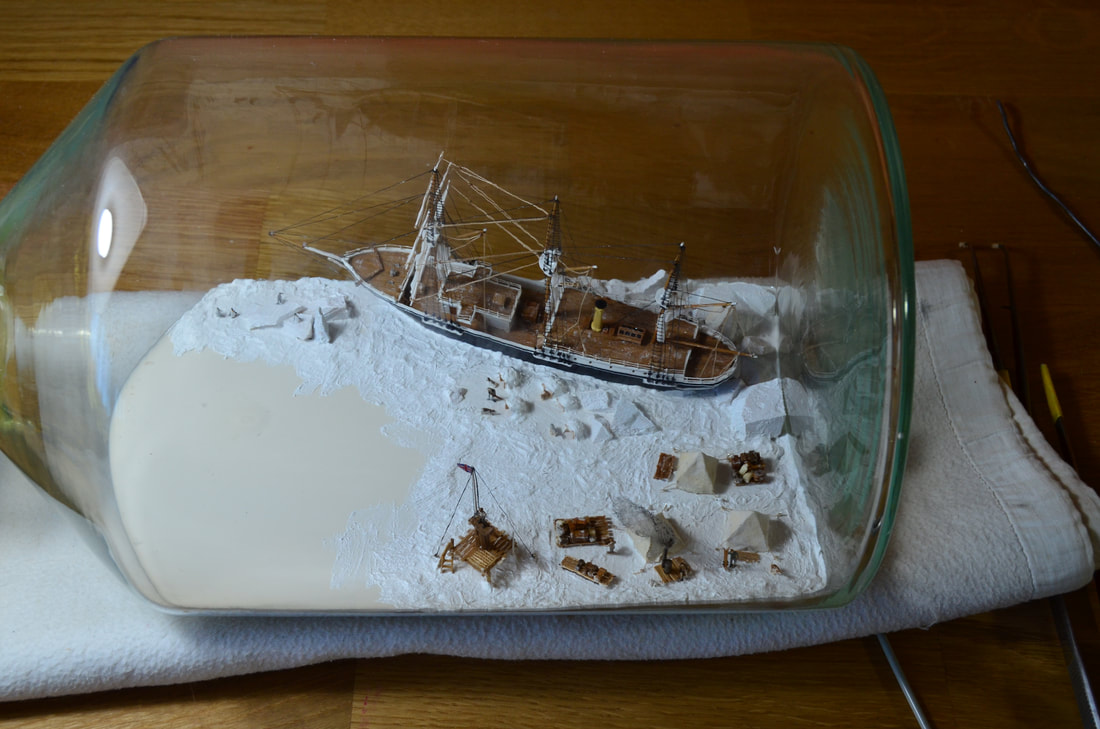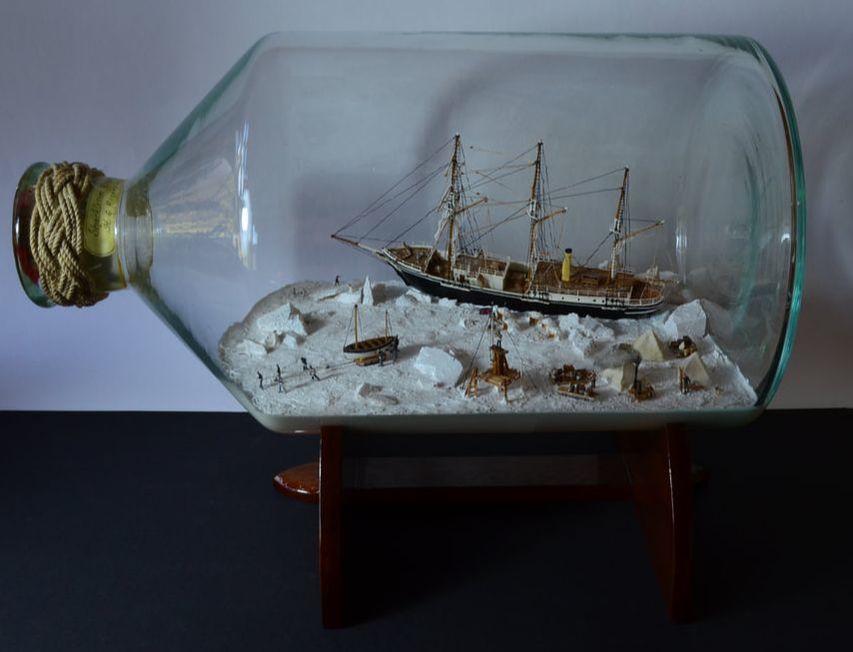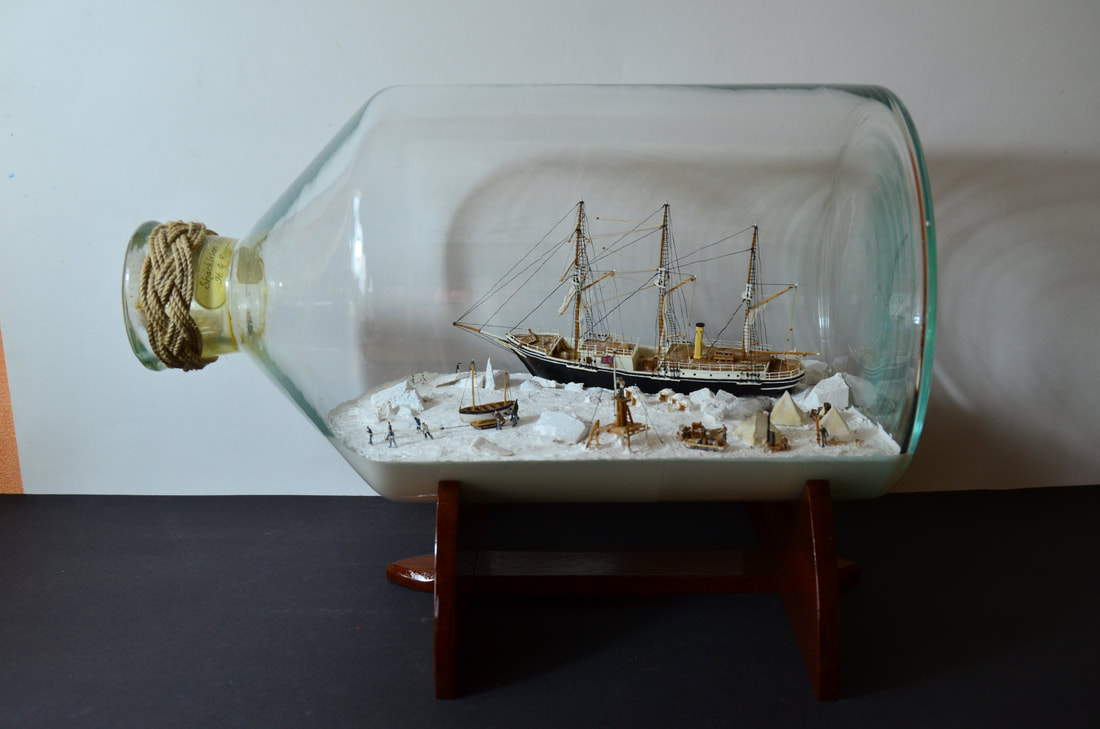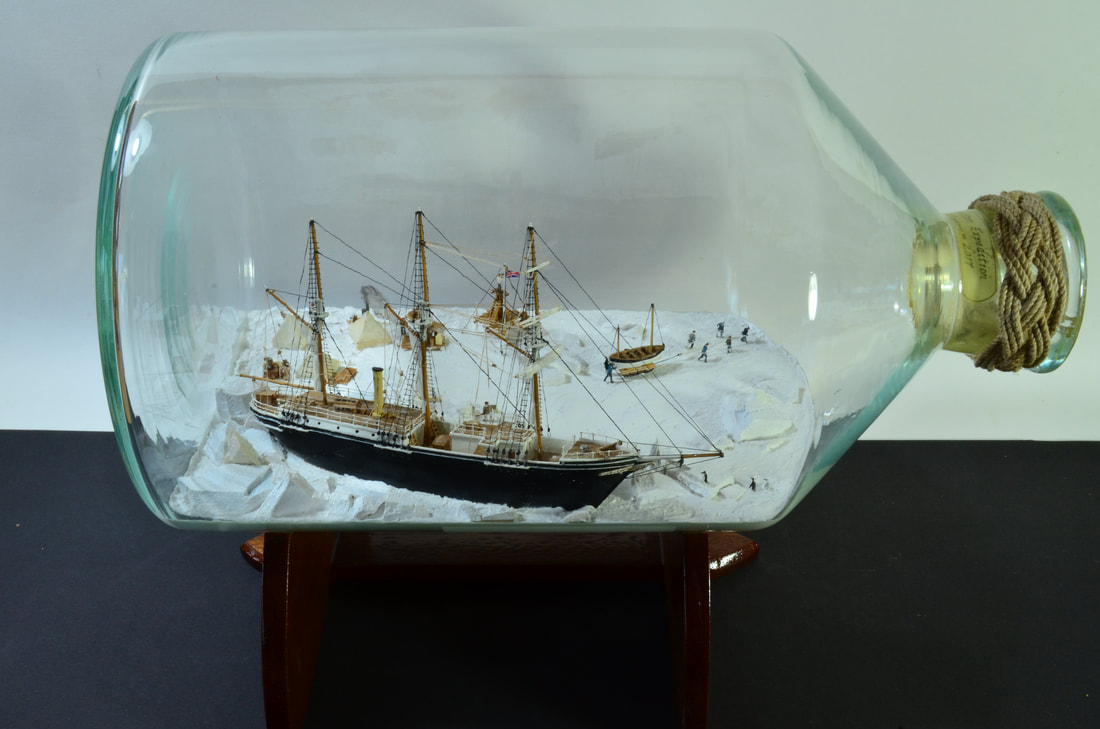Endurance - Shackleton Expedition
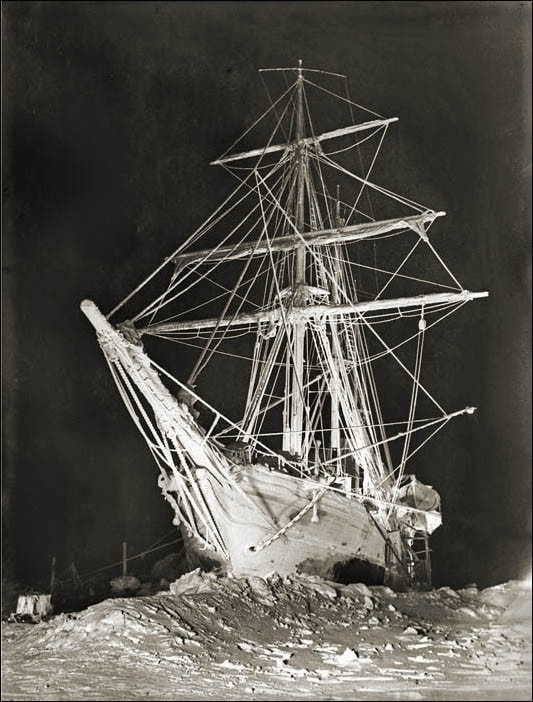 Frank Hurley captured this night image of the Endurance trapped in the arctic ice pack
Frank Hurley captured this night image of the Endurance trapped in the arctic ice pack
There have been attempts to conquer the South pole, explore and cross Antarctica, but none as impressive as the Imperial Trans-Antarctic Expedition led by Sir Ernest Shackleton in 1914 aboard the Endurance, and documented by photographer Frank Hurley.
In brief, Shackleton set out in 1914 in his ship Endurance, with a crew of 28 men and more than twice that in dogs. In January of 1915, the Endurance became trapped and slowly drifted in the pack ice. By October of 1915 Shackleton made the order to abandon ship, as the Endurance was slowly being crushed under the force of the ice pack. The crew salvaged gear, material, and supplies before the Endurance sank and began their slow and arduous march, hauling their life boats, towards whaling outposts. They set up the first camp, named Ocean Camp, subsequently abandoning it for Patience Camp, where they drifted on an ice pack until it began breaking up, forcing them to take to their open boats.
On April 9th, 1916, the crew left patience camp in three open life boats and eventually made landfall and set up camp on a beach on Elephant Island, a remote and uninhabited island. Here they adapted and outfitted the James Caird life boat for a sea voayage. Shackleton with five crew launched the boat on April 24th and after 17 days battling the harsh artic winds and seas, reached the southern side of South Georgia Island. On May 19th Shackleton and two crew set out to cross the glacial peaks of the island and make it to the whaling station on the northern shore. They spent 36 hours of treacherous, frustrating, and tiresome trekking before miraculously arriving at the Stromness whaling station.
Shackleton immediately set out to save his crew on Elephant Island and after three failed attempts due to pack ice, finally arrived on the 30th of August 1916, finding the majority of his crew in poor shape, but all alive and accounted for.
Throughout the experience, Frank Hurly the photographer, documented the entire expedition, and even though he was forced to destroy many of his glass plate negatives after abandoning the ship, there rests an amazing quantity of incredible moments documented in black in white photography, color photos, and film. Through his documentation, we are able to visualize one of the most amazing stories of arctic exploration and ultimate struggle to survive.
I had always wanted to build an artic exploration scene and after purchasing South with Endurance, containing Hurley's photographic documentation and the expedition story, I was well on my way, full of the inspiration I needed to produce my Shackleton Expedition Scene in Bottle.
In brief, Shackleton set out in 1914 in his ship Endurance, with a crew of 28 men and more than twice that in dogs. In January of 1915, the Endurance became trapped and slowly drifted in the pack ice. By October of 1915 Shackleton made the order to abandon ship, as the Endurance was slowly being crushed under the force of the ice pack. The crew salvaged gear, material, and supplies before the Endurance sank and began their slow and arduous march, hauling their life boats, towards whaling outposts. They set up the first camp, named Ocean Camp, subsequently abandoning it for Patience Camp, where they drifted on an ice pack until it began breaking up, forcing them to take to their open boats.
On April 9th, 1916, the crew left patience camp in three open life boats and eventually made landfall and set up camp on a beach on Elephant Island, a remote and uninhabited island. Here they adapted and outfitted the James Caird life boat for a sea voayage. Shackleton with five crew launched the boat on April 24th and after 17 days battling the harsh artic winds and seas, reached the southern side of South Georgia Island. On May 19th Shackleton and two crew set out to cross the glacial peaks of the island and make it to the whaling station on the northern shore. They spent 36 hours of treacherous, frustrating, and tiresome trekking before miraculously arriving at the Stromness whaling station.
Shackleton immediately set out to save his crew on Elephant Island and after three failed attempts due to pack ice, finally arrived on the 30th of August 1916, finding the majority of his crew in poor shape, but all alive and accounted for.
Throughout the experience, Frank Hurly the photographer, documented the entire expedition, and even though he was forced to destroy many of his glass plate negatives after abandoning the ship, there rests an amazing quantity of incredible moments documented in black in white photography, color photos, and film. Through his documentation, we are able to visualize one of the most amazing stories of arctic exploration and ultimate struggle to survive.
I had always wanted to build an artic exploration scene and after purchasing South with Endurance, containing Hurley's photographic documentation and the expedition story, I was well on my way, full of the inspiration I needed to produce my Shackleton Expedition Scene in Bottle.
|
Fabricating the Hull:
The Endurance, like most of my ships was carved from basswood. After achieving the exterior shape of the hull by rough cutting with a hand saw and then carving with chisels, I carved away the wood to deck level, leaving the high bulwarks. After which, I fabricated the slatted deck, stained them, and then began building up the cabin walls. The forward cabin and galley, was built separately and glued in place afterwards. |
The ship had different deck levels with lots of hatches. Each piece was constructed of wood and stained as necessary. I built many sets of stairs, one of each for port and starboard, to access the different deck levels. After all the pieces were glued in place I began inserting the stanchions, sections of wire, glued into tiny holes drilled with a .3 mm drill bit. It is also easier at this point to add the deadeyes to the channels before attaching the masts. The lashing of the deadeyes passes through a hole drilled in the channels, the tail of which is fixed to the outside of the hull.
|
I used a super fine, fly tying line as the horizontals of the railings and then painted them white. The bowsprit was inserted through a hole drilled through the bulwark, and small wire hoops mimic the fittings to receive the fore stays. Under the bowsprit, I added a hand-painted, gold scrolled trailing board. Additional details, like cabin doors, capstan, cat heads, and fittings to receive the running and standing rigging were also put in place before adding the masts.
|
Rigging the Endurance:
The Endurance carried three mast and before stepping them in place I had to cut the ship from its block of wood it was carved from. Each mast has a hole drilled into its based, into which is glued a long string. This string passes through a hole drilled through the hull of the ship. When inserting the ship in the bottle, I pull on these strings to pull the mast into position and glue it in place.
Rigging the ship is the most time consuming part of its construction. Each mast must be perfectly aligned front to back and side to side. I begin by pulling the mast forward and taping the shroud at the proper length, thus providing the correct angle the mast should be leaning. I then add the farthest aft shroud of each mast. This shroud passes freely through a gap between the lower and upper mast section. Once I am happy with the lean of the masts, I align all the masts (side to side) and glue the shroud in place where it passes between the mast sections.
The Endurance carried three mast and before stepping them in place I had to cut the ship from its block of wood it was carved from. Each mast has a hole drilled into its based, into which is glued a long string. This string passes through a hole drilled through the hull of the ship. When inserting the ship in the bottle, I pull on these strings to pull the mast into position and glue it in place.
Rigging the ship is the most time consuming part of its construction. Each mast must be perfectly aligned front to back and side to side. I begin by pulling the mast forward and taping the shroud at the proper length, thus providing the correct angle the mast should be leaning. I then add the farthest aft shroud of each mast. This shroud passes freely through a gap between the lower and upper mast section. Once I am happy with the lean of the masts, I align all the masts (side to side) and glue the shroud in place where it passes between the mast sections.
|
Once the masts are in position, all the standing rigging is added as well as the rat lines. The braces (lines running back from each yard tip) are then added and finally all the running rigging is either fixed permanently in place or passes through a fitting and left long to be manipulated once the ship is in the bottle.
When the rigging is complete, I added some of the sails, which were furled on the masts or yards. I make the suggestion that some of the sails have already been removed since they would have been needed once the crew set up camp and abandoned the ship. One thing you may notice is that the ship is healing over. When I cut the hull from the block of wood I made sure to cut the boat at an angle, since it will be healing to port when placed inside the bottle. Some final touches included added the chimney stack and supporting cables (it must fold down like the masts when being inserted into the bottle) and applying a thin coat of snow and ice to the deck. |
Creating the Camp:
Since I wanted to build the ship as well as the camp, I had to combine different events from the real story. Therefore, this scene reflects different moments in the expedition, and is based on images from both the Ocean Camp and Patience Camp, the entrapment of the ship in the ice, as well as the men's arduous trek across the ice pack.
Since I wanted to build the ship as well as the camp, I had to combine different events from the real story. Therefore, this scene reflects different moments in the expedition, and is based on images from both the Ocean Camp and Patience Camp, the entrapment of the ship in the ice, as well as the men's arduous trek across the ice pack.
|
The scene is made up of six separate pieces to be inserted into the bottle one after the other. All the elements (tents, men, dogs, etc...) are glued to archival card stock, which was already prepped and snow covered.
The tents are made of super fine linen and goods, packed in crates and barrels, are piled up on pallets. One crew member is seen sitting in front of his tent with his stove pipping and a second man is getting his skis ready....there dogs hang about. In the distance and further away from the camp, a group of penguins can be seen on the arctic ice. Just in front of the ship, one of the crew is working on building the dog igloos to give them shelter. Patience camp had a very important observation station, on top of which, you can see one of the crew taking a sighting with a sextant to determine his position. And five men pull the open boat, lashed to a sled, while three push it across the pack ice. I planned the scene out well in advance to know each location of every element. |
Putting the Ship and Scene in the Bottle:
I spent some time of trial and error trying to figure out the best method of creating the ice and snow Arctic landscape. I finally decided on using an opaque white, polyurethane base. Over this, I applied a gel medium mixed with artificial model snow. The advantage was that it dried relatively fast given the lack of air circulation inside the bottle.
Before inserting the ship of scene, I prepared the ship for bottling, making sure that the masts folded properly down and into position and untangled and organized each line that I would have to manipulate once the Endurance was inside the bottle. These lines I taped down to the table and labeled each one. In total there were 15 lines that I would have to pull in position, glue, and cut away.
I then, very carefully, laid down the masts, aligning the yards and gently pushed the ship through the neck of the bottle.
I spent some time of trial and error trying to figure out the best method of creating the ice and snow Arctic landscape. I finally decided on using an opaque white, polyurethane base. Over this, I applied a gel medium mixed with artificial model snow. The advantage was that it dried relatively fast given the lack of air circulation inside the bottle.
Before inserting the ship of scene, I prepared the ship for bottling, making sure that the masts folded properly down and into position and untangled and organized each line that I would have to manipulate once the Endurance was inside the bottle. These lines I taped down to the table and labeled each one. In total there were 15 lines that I would have to pull in position, glue, and cut away.
I then, very carefully, laid down the masts, aligning the yards and gently pushed the ship through the neck of the bottle.
|
Once the ship was inside, I began carefully lifting the masts into position, by pulling on the strings that were attached to the base of each mast and passed through the hull of the ship.
Afterwards, I laid the ship on its side and glue the lines in place and cut them off. I had previously placed large chunks of broken ice behind the ship. These are made of high density urethane foam that were painted white. On top, I applied my coating of snow. |
With the masts of the ship raised, I positioned my ship and glued it in its permanent location with a two part epoxy glue. Once it was dry, I began the tedious task of pulling the lines tight, gluing then in place, and cutting them away. Each line has to be done in a specific order to make sure the tension on the masts is correct. The proper order also helps to make my task easier in that some strings are harder to access with my gluing tool and cutting blade. I glued the stays first to keep the masts in place, then I worked from back to front and lastly cut away the stays.
|
Putting the ship in the bottle took a full afternoon of work and I tackled the scene the following day. One by one, I started placing each piece in the bottle starting with the dogs in front of the ship, followed by the tent scene, and then the observation tower. At that point, I applied a layer of snow knowing it would be easier to do before inserting the rest of the scene. I also included blocks of ice, to display the treacherous landscape of the arctic.
|
The penguins came next and were placed forward of the Endurance. Again, I added more snow before adding the men pulling the open boat on the sled. I also added more ice blocks, piling them up in places. The scene required many coats of snow and this was a lengthy process as I had to wait a few days in between each coat to make sure it all dried.
Complete!
Have a look through the slide show below to see close-up detail shots of the complete scene in bottle.
Thanks so much for visiting! If you have any questions about this build or are interested in purchasing something similar, don't hesitate to contact me via the contact form on my website or by my personal email: [email protected]
